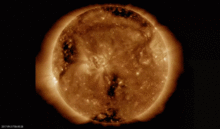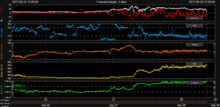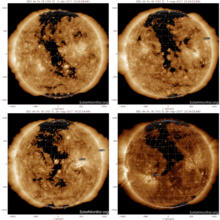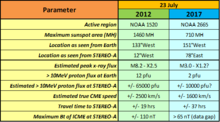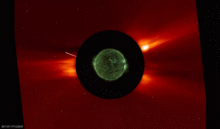news
Submitted on 2017-10-04
An artist's impression of ESA's Solar Orbiter in front of a stormy Sun. The spacecraft is currently being prepared for its 2019 launch from Cape Canaveral, USA.
Submitted on 2017-09-28
Earth is currently (28 September) under the influence of a high speed stream from a coronal hole. A strong geomagnetic storm is in progress. Polar lights will not be visible from Belgium.
Submitted on 2017-09-21
Some additional and impressive images of the two strongest flares that NOAA 2673 produced.
Submitted on 2017-09-11
September 10, 16:06 UT, another extreme light flash was seen on the solar disk. At the same time, a plasma cloud with an extreme fast speed was ejected. On top of this, a proton storm bombarded Earth. The impact of the proton storm could be measured at the surface of the Earth!
Submitted on 2017-09-07
The Sun is pushing its activity to still higher levels. On Sept 6, we could witness a very strong light flash on the Sun. Here on Earth, our radio, GNSS and PROBA2 team went wild because of the impact in their data!
Submitted on 2017-09-05
The number of clouds hurling through space increased dramatically these last days. There is even one cloud heading into the direction of Earth. Fasten your seat belt.
Submitted on 2017-09-04
In the near future, this duo-satellite will create solar eclipses just like the one we had on August 21 2017, but for more then 7 hours each day!
Submitted on 2017-08-22
PROBA2 did it: it saw the solar eclipse from its 750 km-high seat in space. PROBA2 captured this EUV-image with the moon partly covering the sun.
Submitted on 2017-08-02
On 9 August from 21:30 to 24:00, the Royal Observatory opens its premises to the broad public to observe the night sky. Amateur astronomers will bring their telescopes to allow the participants a view on the stars.
Submitted on 2017-07-27
NOAA 2665 was the source of a spectacular eruption on the Sun's farside on 23 July. A comparison is made with the 2012 event from exactly 5 years ago.
Pages
Zircon - This is a contributing Drupal Theme
Design by
WeebPal.


